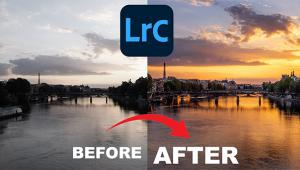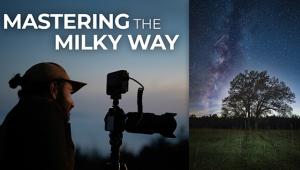10 Great Astrophotography Tips On How To Take Amazing Photos of the Night Sky

(Editor’s note: Now that we’ve showed you the amazing winners of the 2015 Insight Astrophotography Competition, here are some helpful tips on how to capture your own out-of-this-world space shots from Tom Kerss, who is an astronomer at the Royal Observatory Greenwich.)
There’s a common misconception that beautiful photos of the night sky are a product of sleepless nights and big expense. While fancy equipment and ample free time may increase your chances of capturing amazing shots of the heavens, much can be achieved with the equipment most photographers already have, and a few minutes of experimentation—even if they’ve never thought about astrophotography.
The night sky is a unique low-light scene. All the usual rules apply, but each must be observed to the extreme. Here are 10 tips to help ensure dramatic images of the night sky:
1) Use a remote shutter or timer to ensure there’s no vibration when the shot is taken.
2) Manually focus on a bright star (or the moon) using live-view and 10x zoom. Get the star to be as point-like as possible. If shooting the moon, focus on the edge—known as the limb.
3) Your lens simply won’t be able to autofocus on stars, so leave it on manual.
4) The stars are distant suns. If you want to capture their color accurately, use daylight white balance. The camera is often able to see hues of pale blue, orange and occasionally deep red that your eye will not.
5) Shoot your images in RAW + a large JPEG. You can use the JPEG to preview and process from the RAW. Since stars are point-like, high-contrast subjects, optical aberrations in lenses are a leading factor in spoiled pictures. Many software packages can correct somewhat for these when editing in RAW.
6) If you’re taking long exposures, your camera’s sensor will become warmer than the ambient temperature. Give it time to cool down between exposures. Cooler sensors produce less noise. Controlling noise in astronomical pictures is best achieved by taking multiple exposures, but before exploring advanced techniques, give your noise reduction plugin a chance. Modern software is very good at reducing noise, but preserving stars, even in a single exposure.
7) To minimize star trailing, use a wide-angle, fast lens. Short, low-magnification exposures produce the sharpest images. A fast lens will give you more stars and a brighter image, and a wide shot will be more forgiving of drift—a star is less likely to spill over from one pixel to the next over the duration of a shot. Many of my images are made with a Tokina 11-16mm F/2.8 used at 11mm.
8) Exposure times are a matter of experimentation. A bright Northern Lights display can produce a stunning image in just 5-10 seconds. The Milky Way typically demands longer exposures—30-60 seconds. Meteor showers are sporadic in nature, so why not open your shutter for a few minutes on bulb and see what you get?
9) If your lens is F/4 or faster, then, in my experience, photos like the above can be achieved with ISO 400- 800. Find a balance that keeps noise to a minimum.
10) A tripod is essential as exposure times will typically vary between a few seconds and a couple of minutes. Even a tripod will not deliver perfectly sharp stars unless the exposure is minimized because the sky is constantly rotating. Total compensation can be achieved only by using an equatorial tracking platform. Of course, star trails have a unique appeal and can be achieved with long exposures.
- Log in or register to post comments













































